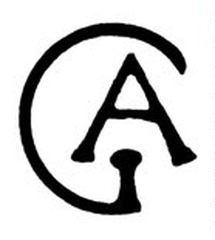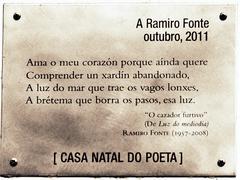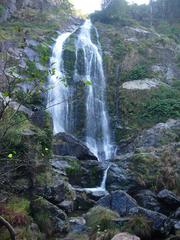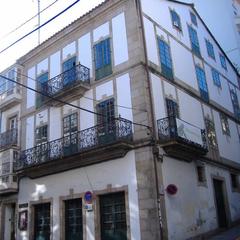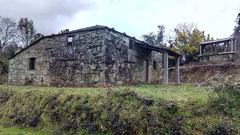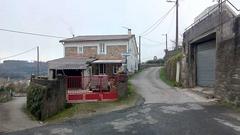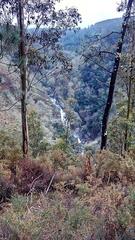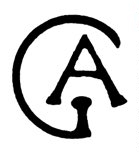
Pontedeume, Ferrol, Spain Visiting Guide
Date: 16/08/2024
Introduction to Pontedeume, Ferrol
Pontedeume, a captivating town in the province of A Coruña, Galicia, Spain, is a blend of historical intrigue, architectural splendor, and natural beauty. Founded in 1270 by King Alfonso X the Wise, Pontedeume’s strategic location at the mouth of the Eume River made it pivotal in controlling travel and trade routes. The town’s medieval origins are deeply intertwined with the influential Andrade family, who played a significant role in shaping its history (Fascinating Spain). Visitors can marvel at the well-preserved medieval architecture, including the iconic Torreón de los Andrade and the stone bridge over the Eume River, which stands as a testament to the town’s historical significance (Camino Ways).
Pontedeume is also an important stop on the English Way path of the Camino de Santiago, attracting pilgrims from across Europe. Its proximity to the inner harbor of Ferrol and the natural wonders of the Fragas do Eume Natural Park further enhance its appeal. Visitors can explore the serene Monastery of Caaveiro, experience local festivals, and savor the town’s unique culinary offerings, making Pontedeume an ideal destination for history buffs, nature lovers, and cultural enthusiasts alike (Vive Camino).
Table of Contents
- [Medieval Origins and the Andrade Family](#medieval-origins-and-the-andrade-familymedieval-origins-and-the-andrade-family)
- [Architectural Heritage](#architectural-heritagearchitectural-heritage)
- [Visiting Hours and Tickets](#visiting-hours-and-ticketsvisiting-hours-and-tickets)
- [Pilgrimage and Maritime History](#pilgrimage-and-maritime-historypilgrimage-and-maritime-history)
- [Travel Tips and Nearby Attractions](#travel-tips-and-nearby-attractionstravel-tips-and-nearby-attractions)
- [The Fragas do Eume Natural Park](#the-fragas-do-eume-natural-parkthe-fragas-do-eume-natural-park)
- [Cultural and Economic Development](#cultural-and-economic-developmentcultural-and-economic-development)
- [Notable Historical Figures](#notable-historical-figuresnotable-historical-figures)
- [Frequently Asked Questions (FAQ)](#frequently-asked-questions-faqfrequently-asked-questions-faq)
- [Conclusion](#conclusionconclusion)
Medieval Origins and the Andrade Family
Pontedeume was founded in 1270 by King Alfonso X the Wise. Its strategic location at the mouth of the Eume River made it an important point for controlling travel and trade routes. The original wooden bridge over the Eume River, authorized by Alfonso X, was a crucial infrastructure that allowed the feudal lord to collect tolls and control the passage of travelers and adversaries (Fascinating Spain).
In 1371, King Henry II granted jurisdiction over Pontedeume to Fernán Pérez de Andrade III as a reward for his service in the war against Peter I. This marked the beginning of the Andrade family’s dominance in northern Galicia. Fernán Pérez de Andrade III, known as “O Bo” (“the Good”), replaced the wooden bridge with a stone one, solidifying the family’s control over this vital travel route (Fascinating Spain).
Architectural Heritage
Pontedeume is renowned for its well-preserved medieval architecture. The town’s centerpiece is the impressive medieval bridge, a remarkable structure that has stood the test of time and continues to connect the community (Camino Ways). Another highlight is the Torreón de los Andrade, a historical tower that forms part of a 14th-century fortress. This iconic landmark offers a fascinating glimpse into the region’s feudal history and stands as a testament to the power and influence of the Andrade family in medieval Galicia (Camino Ways).
Visiting Hours and Tickets
Most historical sites in Pontedeume, including the Torreón de los Andrade, are open to the public year-round. However, visiting hours can vary, so it is advisable to check the official town website or local tourist information centers for the most up-to-date information. Admission to many sites is free, but some may require a small fee.
Pilgrimage and Maritime History
Pontedeume is located on the English Way path of the Camino de Santiago, an ancient pilgrimage route that dates back to the 13th century. The town’s port was historically significant as a landing place for pilgrims from northern and western Europe. The inner harbor of Ferrol, along with that of A Coruña, served as historical landing places for these pilgrims, who traveled to Santiago de Compostela to seek spiritual solace (Vive Camino).
Travel Tips and Nearby Attractions
When visiting Pontedeume, consider exploring nearby attractions such as the inner harbor of Ferrol and A Coruña. These locations offer additional historical sites and beautiful coastal views. It’s also recommended to bring comfortable walking shoes as many of the historical sites are best explored on foot.
The Fragas do Eume Natural Park
One of the most significant natural landmarks near Pontedeume is the Fragas do Eume Natural Park. This park, covering 9,125 hectares, is one of the best-preserved Atlantic coastal forests in Europe. It is home to the Monastery of Caaveiro, which dates back to the 10th century. The monastery offers stunning views over the Eume River and serves as a testament to the region’s rich monastic history (El Camino Con Correos).
Cultural and Economic Development
Pontedeume’s cultural and economic development has been significantly influenced by its historical landmarks and strategic location. The town hosts several festivals and events that celebrate its rich history and cultural heritage. Notable festivals include El Carmen (July 16), As Peras patron saint festival (September 7-11), and the romería (pilgrimage) of San Miguel de Breamo (May 8 and September 29) (Fascinating Spain).
The town’s economy has traditionally been based on farming and services, but it has also developed into a coastal resort, attracting tourists with its historical charm and natural beauty. The local market, known as the Feirón, is held every Saturday and offers local produce such as fruits, vegetables, cottage cheese, empanadas, and honey. This market is a testament to the town’s vibrant local economy and cultural traditions (El Camino Con Correos).
Notable Historical Figures
Pontedeume has been home to several notable historical figures, particularly from the Andrade family. Fernán Pérez de Andrade III, known as “O Bo,” played a pivotal role in the town’s development and the family’s rise to power in northern Galicia. The Andrade family’s influence is still evident in the town’s architecture and historical landmarks, which continue to attract visitors and historians alike (Wikipedia).
Frequently Asked Questions (FAQ)
Q: What are the visiting hours for the Torreón de los Andrade?
A: Visiting hours vary by season. It’s best to check the official town website or local tourist information centers for the latest information.
Q: Are there any entrance fees for the historical sites in Pontedeume?
A: Many sites are free to visit, but some may require a small fee. Check local resources for specific information.
Q: What are some nearby attractions to visit while in Pontedeume?
A: Consider exploring the inner harbor of Ferrol and A Coruña for additional historical sites and beautiful coastal views.
Conclusion
Pontedeume’s historical significance is deeply rooted in its medieval origins, architectural heritage, and strategic location on the Camino de Santiago. The town’s development has been shaped by its maritime history, cultural traditions, and the influence of the Andrade family. Today, Pontedeume stands as a testament to Galicia’s rich history and cultural heritage, offering visitors a unique blend of historical landmarks, natural beauty, and vibrant local traditions. Make sure to check visiting hours and ticket prices in advance to plan your trip effectively.
Sources and References
- Fascinating Spain. (n.d.). Pontedeume. Retrieved from Fascinating Spain
- Camino Ways. (n.d.). Towns of the Camino Ingles. Retrieved from Camino Ways
- Vive Camino. (n.d.). Ferrol to Pontedeume. Retrieved from Vive Camino
- El Camino Con Correos. (n.d.). Camino Ingles: The English Way. Retrieved from El Camino Con Correos
